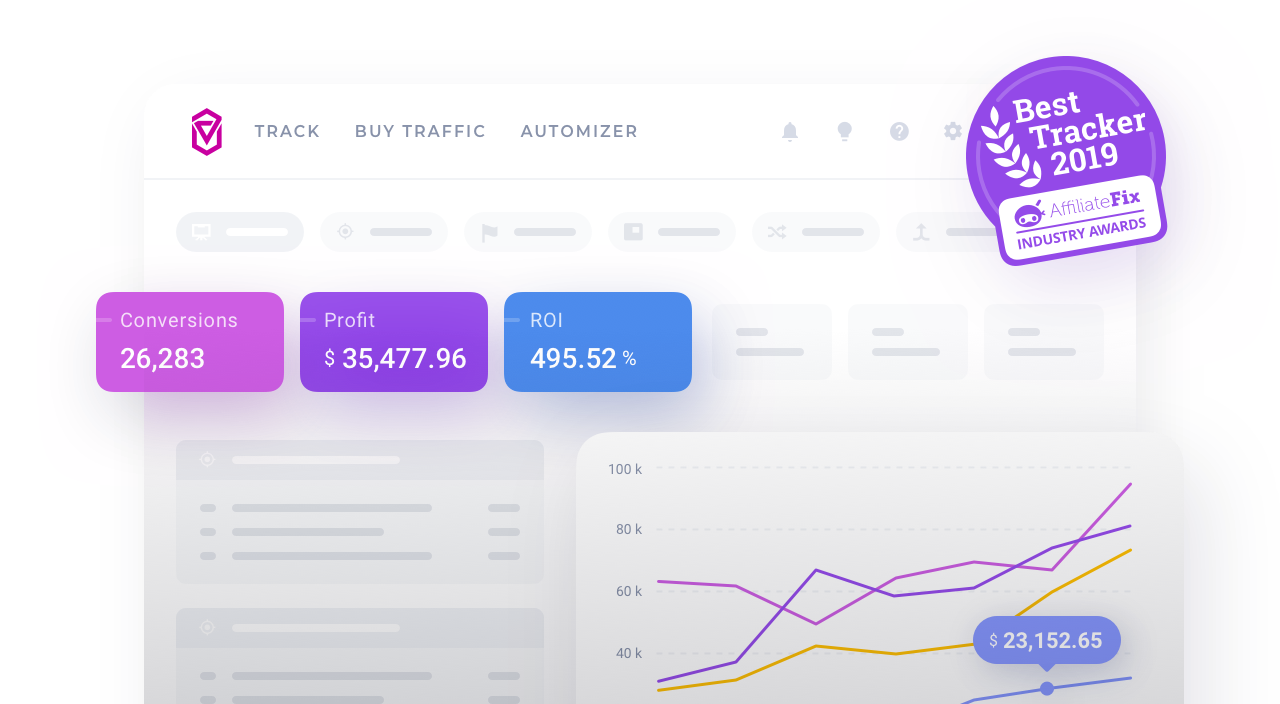Google Ads Integration

Integrating Voluum and Google accounts enables Voluum to periodically ask for campaign cost information and update it automatically and report conversions back to Google using the S2S postback method.
Before you start
Before you perform an integration, make sure that you have the following:
- An active Voluum account.
- An active Google Ads account in Google
-
A Google Ads customer ID. You can find it in your Google Ads account, in the top right corner of the screen. If you have more than one Google Ads account under your Google account, you can select an account you want to integrate with by clicking the profile icon:

- At least one campaign running and with tracking set on a campaign level, not on an ad, ad set or account levels.
Once you have everything ready, read the further part of this guide.
I. Set up integration
- In Voluum, go to the AUTOMIZER module.
- Go to the Traffic sources tab.
-
Click the Add traffic source button.

-
Click the Add new integration button under the appropriate traffic source.

-
Provide your Google account email or phone number.

-
Provide your Google account password.

-
Grant Voluum permissions to manage your Google Ads campaign by clicking the Allow button.

-
Confirm your choice by clicking the Allow button again.

-
When the Voluum page loads again, select which campaigns should have their costs integrated by removing or providing relevant Voluum campaign IDs and click the Add integration button.

-
Your Google account has been integrated with Voluum.

Cost models in traffic source setup and integration: With the full API traffic source integrations, the cost information passed via the integration will OVERRIDE any cost value set in a traffic source setup in Voluum. However, the full integration fetches cost info in time intervals. If you want to have estimated cost values between cost update intervals, you can provide a cost value in a given cost model. When cost information will be fetched, it will replace the estimates. If you do not care about having estimates between cost update intervals, you can set the cost model option to Not tracked.
II. Pass conversions from Voluum to Google with integration
How Does It Work?
Once you integrate your Google Ads account with Voluum, you will be able to generate a postback URL that you will submit as a traffic source postback URL in Voluum. This way, conversion info reported by an affiliate network platform to Voluum will be passed back to Google as well.
Prerequisites:
In order to track conversions with Google Ads, you need the following:
- Tracking of Google traffic with Voluum set on a campaign level, not on an ad, ad set or account levels.
- A Google account integrated with a Voluum account.
- Conversion tracking in Voluum set on your account. In order to learn more, read the Track Conversions article.
Set up passing conversions
With tracking of Google Ads events already set up, and with information about conversions being passed to Voluum you have all the information you need gathered in one place. To complete the circuit, you need to pass conversion info from Voluum to Google Ads. This can be achieved in three steps:
A. Create a conversion action
- In Google Ads, go to Goals / Summary.
-
Select the New conversion action button.

-
Select the Import type of conversion and then the Manual import using API or uploads / Track conversions from clicks option and click the CONTINUE button.

-
Provide all required information about a conversion action in the Create an action view, including the name of the conversion action, and click the Create and continue button.

- You do not need to set up a conversion event in Google Ads any further.
B. Generate a postback URL in Voluum
- In Voluum, click the
 button to go to the Settings page.
button to go to the Settings page. - Go to the Integrations tab.
-
In the TRAFFIC SOURCE INTEGRATIONS section, click the Generate button next to the Google integration.

- Provide the name of the conversion action that you have created in Google Ads in the Type Conversion Name text field. You can also pass additional information with each conversion by providing relevant information in the Optional parameters section.
-
Click the Generate postback URL button.

-
Click the Copy button to copy the URL to the clipboard.

C. Submit a postback URL to your traffic source setup in Voluum
Reauthentication
It may happen that Facebook or Google may deactivate the integration by themselves. To troubleshoot this, you can refresh its status in the integration status window.

Previously, you had to create a new integration, which caused losing campaign mappings.
Frequently Asked Questions
Have more questions? You might find answers below:
Why conversions from Voluum are not tracked in Google Ads?
Double-check if the Google Ads Postback URL is correct and the conversion event in Postback URL is the same as event name you added in Google Ads. Check if the Google Ads Click ID, saved under External ID in Voluum, is tracked for those conversions. Check if the conversions came from iOS visits - Google may reject such conversions. Also, ask Google support why conversions from Voluum were rejected.



